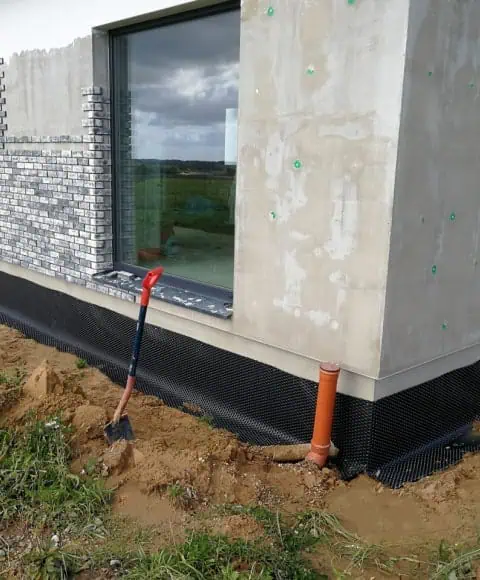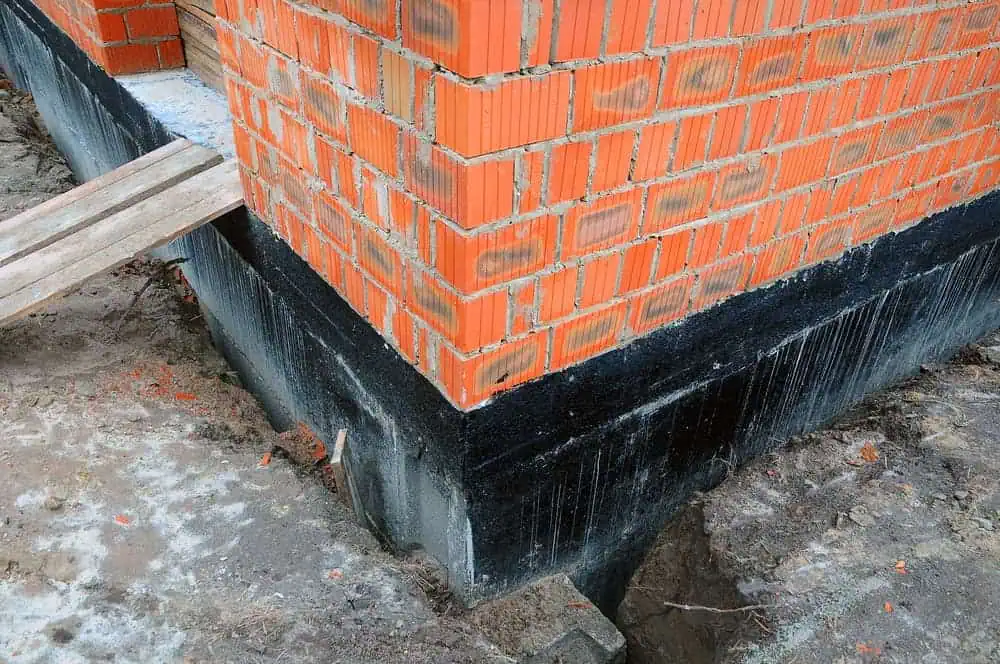Summary:
Essential Design Considerations for Boston Area Retaining Walls
Before you start shopping for materials or calling contractors, you need to understand what makes retaining walls succeed or fail in Massachusetts. The biggest mistake homeowners make is treating their retaining wall like a simple landscaping project instead of the structural system it really is.
Your wall needs to handle three major forces: the weight of soil pressing against it, water pressure from drainage issues, and the expansion forces from freeze-thaw cycles. Miss any of these considerations, and you’re looking at expensive repairs within a few years.
The good news? When you plan correctly from the start, you can build walls that last 50 to 200 years with minimal maintenance.
Understanding Your Soil Type and Slope Conditions
Not all soil behaves the same way, and this matters more than you might think. Clay soils around Boston retain water and create substantial pressure against retaining walls, especially during wet seasons. Sandy soils drain better but can shift and settle unexpectedly. Rocky soils present their own challenges with unpredictable pressure points.
Here’s how to assess what you’re working with: dig a test hole about three feet deep in the area where you plan to build. Look at the soil layers and note how water behaves during and after rain. Clay will hold water like a sponge, creating hydrostatic pressure that can push your wall over time. Sandy soil will drain quickly but may require additional reinforcement to prevent settling.
Your slope angle matters too. Gentle slopes under 2:1 (two feet horizontal for every foot vertical) are manageable with standard retaining wall techniques. Steeper slopes require engineered solutions and often benefit from terraced wall systems instead of one tall wall.
Don’t forget to check for underground utilities before any excavation. Call 811 at least 72 hours before you plan to dig. You’d be surprised how many water lines, gas lines, and electrical cables run through areas where homeowners want to build retaining walls.
Drainage Planning: The Make-or-Break Factor
Poor drainage causes more retaining wall failures than any other factor. When water builds up behind your wall, it creates hydrostatic pressure that even the strongest materials can’t handle indefinitely. This pressure gets worse during freeze-thaw cycles when trapped water expands as it turns to ice.
Proper drainage starts with understanding where water comes from and where it needs to go. Surface water from rain and snowmelt is obvious, but groundwater can be trickier to predict. You might have seasonal springs or high water tables that only show up during certain times of year.
Your drainage system should include several components working together. Install a perforated drain pipe at the base of your wall, surrounded by clean gravel that allows water to flow freely. The pipe should slope at least one inch for every four feet of length, directing water away from your foundation and other structures.
Behind the wall, use a layer of landscape fabric in a C-shape with the open end facing downhill. This prevents fine soil particles from clogging your gravel drainage layer while still allowing water to pass through. Fill the area behind the wall with well-draining gravel or crushed stone rather than the excavated soil.
Consider surface drainage too. Grade the area above your retaining wall so water flows away from the wall rather than toward it. Install gutters and downspouts to direct roof runoff away from the wall area. These simple steps prevent most drainage problems before they start.
Material Selection for New England Weather
Choosing the right materials for your retaining wall isn’t just about appearance—it’s about survival. New England’s freeze-thaw cycles, heavy snow loads, and varying soil conditions demand materials that can handle thermal expansion, moisture penetration, and structural stress.
The materials that work well in warmer climates might fail spectacularly here. Certain types of concrete blocks crack when water freezes inside them. Some natural stones become brittle in cold weather. Even treated lumber has limitations when exposed to our winter conditions year after year.
Understanding your options helps you make decisions based on your specific situation, budget, and long-term goals.
Natural Stone vs. Concrete Block Systems
Natural stone retaining walls offer unmatched durability and aesthetic appeal, but they require skilled installation and typically cost $25 to $40 per square foot in the Boston area. Granite, limestone, and locally-quarried fieldstone handle freeze-thaw cycles well because they’re naturally porous enough to allow moisture movement without cracking.
The key with natural stone is proper selection and installation technique. Avoid stones that show signs of layering or sedimentary structure—these can split along natural fault lines when water freezes inside them. Look for dense, uniform stones with minimal cracks or fissures.
Dry-stacked stone walls (built without mortar) actually perform better in freeze-thaw conditions than mortared walls because they can flex slightly as the ground moves. The individual stones redistribute stress naturally, and any minor shifting usually self-corrects over time.
Concrete block systems offer more predictable costs and faster installation, typically running $15 to $30 per square foot. Modern segmental retaining wall blocks are engineered specifically for structural performance and weather resistance. They interlock mechanically rather than relying on mortar, which makes them more flexible during ground movement.
Look for blocks that meet ASTM standards for freeze-thaw resistance. These blocks are tested through multiple freeze-thaw cycles to ensure they won’t crack or spall when exposed to New England weather conditions. Many manufacturers offer 50-year warranties on properly installed systems.
The hollow cores in many concrete blocks provide space for reinforcement when needed and reduce the overall weight of the wall. This makes them easier to handle during installation and reduces the load on your foundation preparation.
Engineered Solutions for Challenging Sites
Some retaining wall projects require more than standard materials and techniques. Walls over four feet tall, sites with poor soil conditions, or areas with significant water management challenges often need engineered solutions to ensure long-term stability and code compliance.
Geogrid reinforcement extends the effective base of your retaining wall deep into the soil behind it, creating a much more stable system. These synthetic fabric grids are placed at specific intervals as the wall is built, then covered with compacted backfill. The result is a reinforced soil mass that works with your wall rather than against it.
Soil nails or tiebacks anchor your wall to stable soil or bedrock well behind the wall face. These systems work well for tall walls or situations where you don’t have much space for traditional reinforcement methods. They require specialized equipment and engineering, but they can make otherwise impossible projects feasible.
Terraced wall systems break up tall retaining requirements into multiple shorter walls with level areas between them. This approach reduces the pressure on any single wall while creating more usable space. The level areas can become planting beds, walkways, or even small patios.
For sites with significant drainage challenges, French drain systems or even engineered drainage structures might be necessary. These systems collect and redirect groundwater before it reaches your retaining wall area, eliminating hydrostatic pressure problems at the source.
When building codes require engineered solutions, don’t view this as an unnecessary expense. Professional engineering ensures your wall can handle the specific conditions at your site and provides the documentation needed for permits and insurance purposes.
Protecting Your Investment Through New England Winters
Building your retaining wall correctly is just the beginning. Proper maintenance and winter preparation keep your investment performing well for decades. The freeze-thaw cycles that make New England winters challenging for retaining walls are predictable, which means you can take steps to minimize their impact.
Start your winter preparation in late fall by cleaning debris from drainage areas and checking that water flows freely away from your wall. Apply water-repellent sealants to concrete or stone surfaces to reduce water penetration. Remove any vegetation growing in wall joints, as plant roots can expand cracks when they freeze.
Most importantly, never ignore small problems. Minor cracks or drainage issues that seem manageable in summer can become major structural problems after a few freeze-thaw cycles. Address these issues promptly, and your retaining wall will serve you well for generations.
When you’re ready to move forward with your retaining wall project, consider working with experienced professionals who understand local conditions and building requirements. We have the knowledge and expertise to help you create retaining walls that enhance your property while standing up to everything New England weather can deliver.




